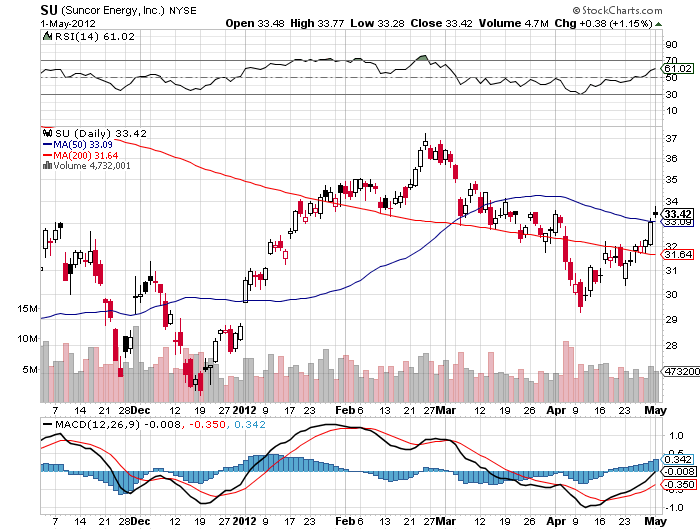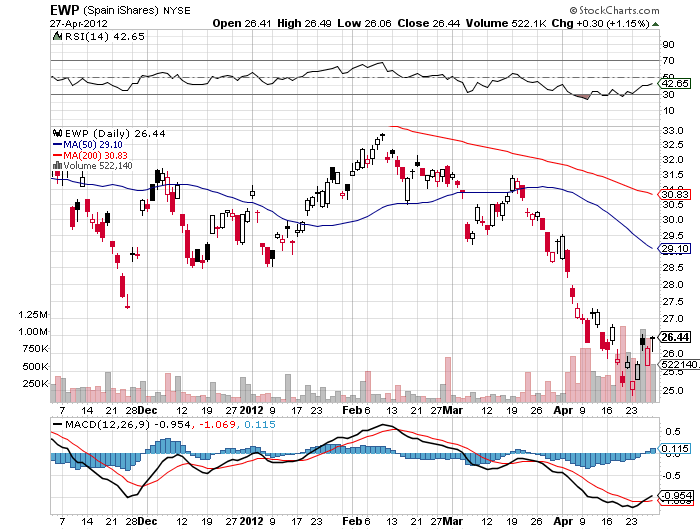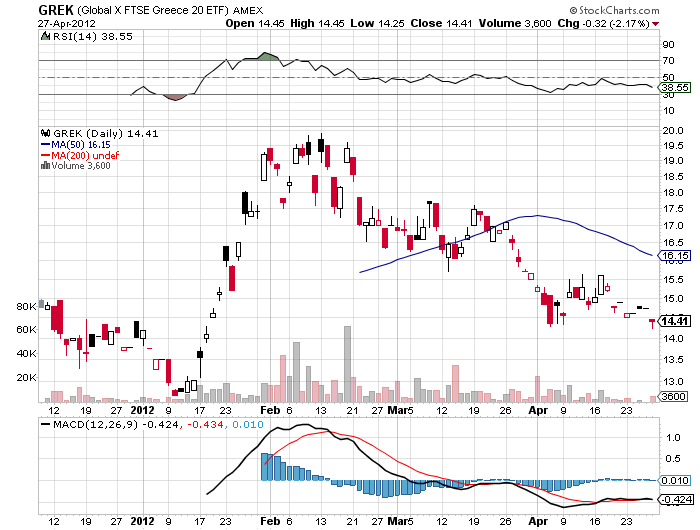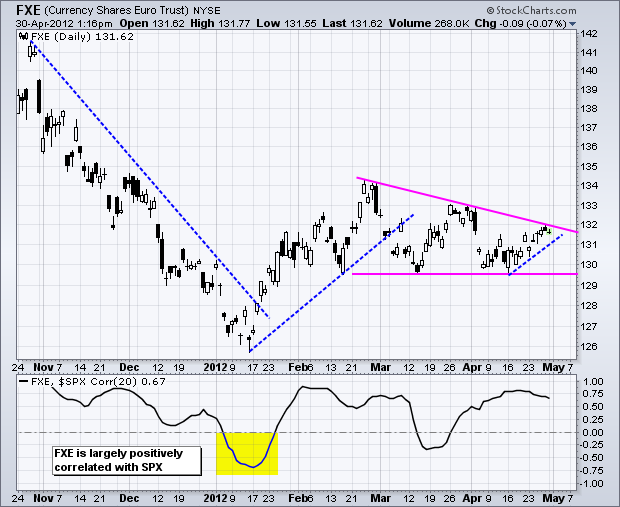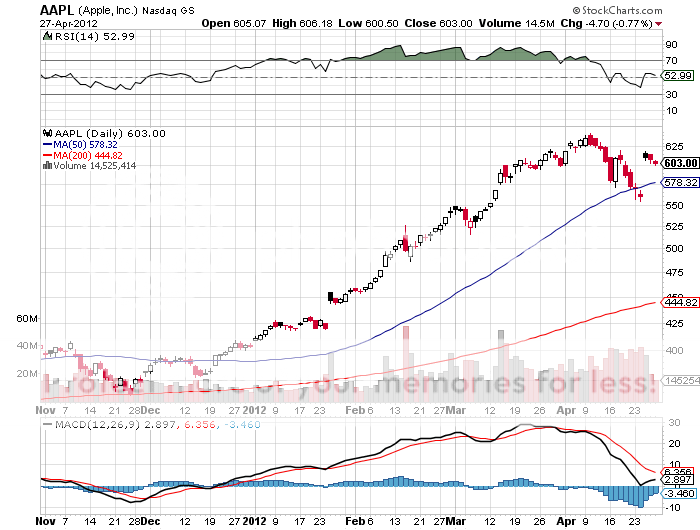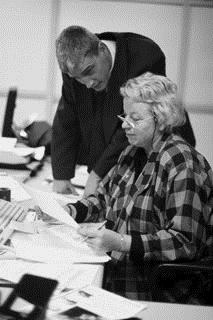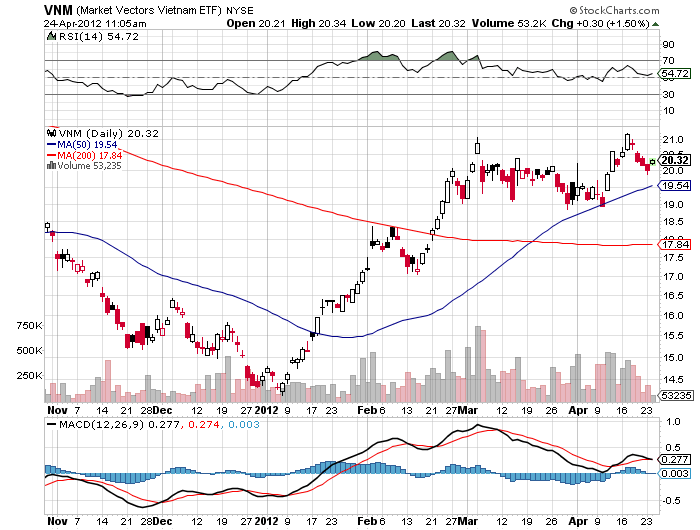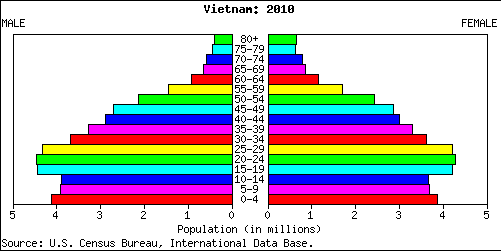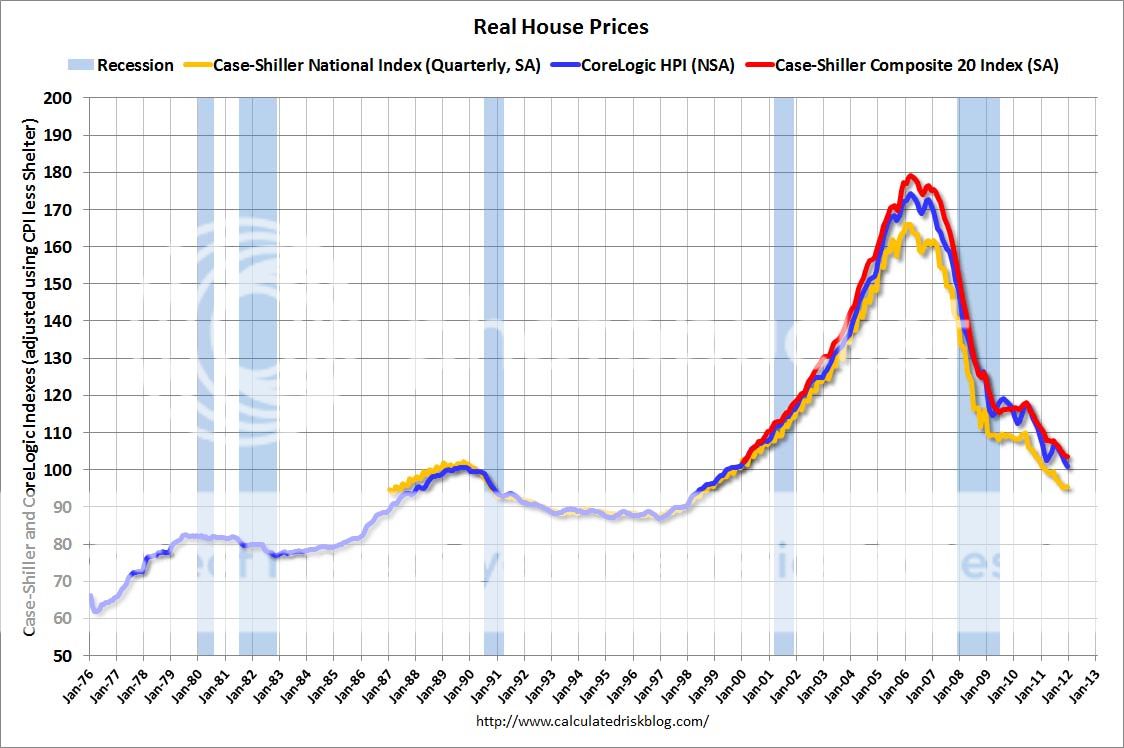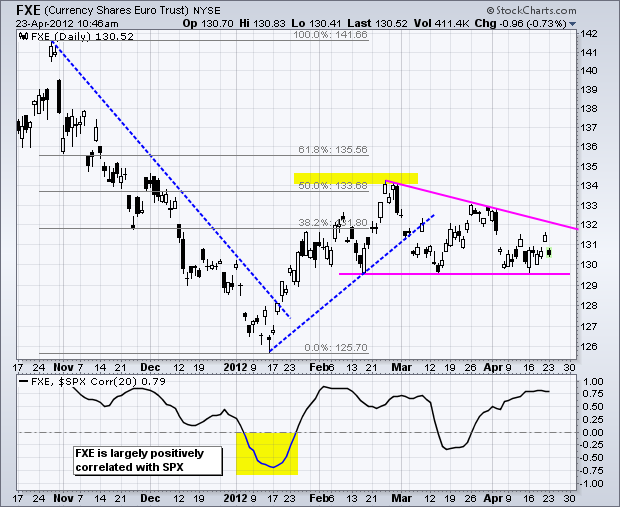
Anyone who has any illusions about the Canadian tar sands business should take a look at the picture below. I?m not a fanatic, sandal wearing, organic bean sprout eating environmentalist, but just looking at it tells you that this is an eco-disaster of Biblical proportions.
A $50 billion investment by several firms over the last decade is now producing 750,000 barrels/day, and another $100 billion in capital is headed north. You have to cut down a whole forest, remove two tons of peat, then another two tons of sand, and burn 100 barrels of oil equivalent to heat rivers of water to steam, just to produce a single miserable barrel of oil.
This gives you the world?s highest production cost, thought to be $80-$100/barrel. There are now 50 square miles of sludge ponds in Northern Alberta leaching a witch?s brew of poisons into the water supply, which has caused the local cancer rate to explode tenfold. We?re not just talking about a few sick geese here.
Canada is the largest foreign supplier of oil to the US, accounting for 19% of our total, and half of that is coming from tar sands. The whole industry was built as a hedge against some Third World War, Armageddon type total cut off of all foreign crude supplies that would drive prices to $500/barrel, making all of this hugely profitable someday.
Maybe the owners think they can get away with this because it is in the middle of nowhere. An army of lawyers hitting these projects with a tidal wave of litigation think otherwise. This is the reason why environmentalist opposition to the Keystone pipeline was so acerbic. They view the tar sands as the world?s single largest source of greenhouse gasses. With North Dakota?s production expected to exceed total Canadian tar sands production by next year, and with challenges now arising from the seemingly endless new supply of cheap natural gas, the whole project may become redundant
After looking at this picture and analyzing the numbers, you have to ask if it is really worth it, just so you can drive your Hummer to Wal-Mart. It all makes the future performance of major producer, Suncor Energy (SU), very suspect.
On my way back from Lake Tahoe last weekend I saw that every bend of the American river was dotted with hopeful miners, looking to make a windfall fortune. Weekend hobbyists were there panning away from the banks, while the hardcore pros stood in hip waders balancing portable pumps on truck inner tubes, pouring sand into sluice boxes. Welcome to the new California gold rush.
A sharp eyed veteran can take in $2,000 worth of gold dust a day. The new 2012'ers were driven by high prices of gold at $1,650 and the attendant headlines, but also by unemployment, and recent heavy rains that flushed out new quantities of the yellow metal out from the Sierras. They were no doubt inspired by the chance discovery of an 8.7 ounce nugget in May near Bakersfield, worth an impressive $14,300.
Local folklore says that The Sierra's have given up only 20% of their gold, and the remaining 80% is still up there awaiting discovery. Out of work construction workers are taking their heavy equipment up to the mountains and using it to reopen mines that have been abandoned since the 19th century.
The US Bureau of Land Management says that mining permits in the Golden State this year have shot up from 15,606 to 23,974. Unfortunately, the big money here is being made by the sellers of supplies and services to the new miners, much as Levi Strauss and Wells Fargo did in the original 1849 gold rush.
There is no doubt that the crisis in Spain is getting worse, threatening to drag down the rest of Europe, and ultimately the US, with it. Over the weekend, Standard and Poor?s downgraded the debt of 11 Spanish banks, after downgrading the country?s sovereign debt weeks earlier. Further downgrades are a given so expect them in your regular Monday morning headlines. Expect more deposit flight from banks and spiking of sovereign bond interest rates.
The country is now officially in recession, as are seven other countries, including Great Britain. Spain?s unemployment rate is now at 24%, the peak seen in the US during the great depression, and is 50% for those under 25. It all adds up to more deposit flight from banks and spiking of Spanish sovereign bond interest rates.
It was easy to dismiss the long, tortuous descent into the Greek bond default as irrelevant and just a favorite topic of a few journalists, as it only accounted for 1.3% of European?s $16.7 trillion GDP. That makes Greece as about as important to the continent?s total fiscal health as the bankrupt cities of Vallejo, CA, Harrisburg, PA, Central Falls, RI, and Birmingham, GA, combined, are to the US.
Spain is another kettle of fish, with the fourth largest economy accounting for 6% GDP. Spain is an even larger portion of the European financial system, with bank assets at $3.7 trillion.
Don?t expect an improvement in the Spanish economy any time soon. It just passed one of the most austere budgets in European history, attempting to roll back decades of over spending and under taxing in one shot. While austerity is great for balancing the budget for the short term, it also triggers recessions which create longer term structural problems, as it has already done in Great Britain and Greece.
The only possible growth strategy for Europe is for the private sector to ramp up spending while the governments are cutting back. In Europe, that means getting rich countries like Germany to spend more to create end demand for poor countries. However, in reality, companies run the opposite direction, hunkering down during times of economic uncertainty.
There is also an additional internal conflict afflicting Europe in that the debt heavy counties of south need inflation to devalue their debt, but deflation to restore their international competitiveness and growth. It all means that the Spanish downturn will be longer and weaker than previously thought.
In December there was a big splash when the ?500 billion LTRO was announced to take distressed sovereign debt off the hands of the banks at extremely generous prices. That has since fizzled. Now hedge funds are betting that the other shoe will fall. A second LTRO is a given, but how long will it take them to realize this and how far will bond prices plummet until we get there?
Don?t count on any US bailouts to ease Spanish pain, especially during an election year. Treasury Secretary, Tim Geithner, personally told me last week that Europe was a rich continent and had adequate resources to solve its own problems. Translation: no cash for the beleaguered continent.
It all makes my short position in the Euro through the (FXE) look pretty interesting. Some of the weaknesses mentioned above are already well known and priced into the currency markets, but not all of them. And the Europeans have a seemingly endless talent for discovering new structural problems as time goes on. Those unintended consequences can be a bitch.
With eight governments having fallen since the crisis began, and a ninth in France certain to go this weekend, who will be next is anyone?s guess. We have all become Spanish bond traders, whether we want to or not. Watch those screens.
Austerity?s Unintended Consequences
Dilbert cartoonist Scott Adams argues that you should invest in companies you hate, because only the most unprincipled and rapacious firms make the greatest profits.
Moral bankruptcy is a great leading indicator of success, and the best ones can get you to balance your wallet on the end of your nose and bark like a seal, as you buy products that you utterly despise. Companies with the work ethic of a serial killer, like British Petroleum (BP) come to mind, but you can also add other firms to the list, like Goldman Sachs (GS), Citicorp (C), Pfizer (PFE), and Altria (MO).
Adams initially started investing in companies he loved, like Enron, WorldCom, and Webvan, and absolutely lost his shirt. His advice to (BP) is not to waste money on artificial, sincere, maudlin ad campaigns apologizing, but get us to hate them more. Bring on more dead bird pictures!
Who is Adams about to hate next? Apple (AAPL), because he irrationally craves their products, resents their emotional control over his entire family, can?t get iTunes to work, and is appalled by those aloof black turtlenecks that Steve Jobs wore. For my own recent piece about this incredible company, please click here for ?Apple?s Next Stop: $1,000? a
Hand Me a &*%@* Buy Ticket!
When anyone starts lecturing you that the US has the highest tax rate in the industrialized world, just turn around, walk away, and pretend you never heard of them. This person is either ignorant about this country's taxation system, or is deliberately trying to deceive or mislead you.
According to a report released by the Internal Revenue Service, America's tax collection agency, the top 400 individual tax returns filed in 2009 reported an average gross income of $358 million each. The average amount of tax paid by these individuals came to under 17%, less than half the maximum Federal rate of 35%, which kicks in on annual income over $372,950 (click here for the 2009 tax tables). This explains why Warren Buffet pays a much lower tax rate than his secretary. It really is true that in America, only the poor people pay taxes.
Look at any international comparison of taxes to GDP, and one can always find the United States at the bottom of the table. Low American taxes is one of the main reasons why I moved my company here from England 18 years ago. Take a look at the Fortune 500, where one third of the largest companies pay no tax at all, and many that dominate the top of the list, like the oil majors, pay only token amounts. However, if any politician wants to pander to voters during election time on a tax cutting platform he will only bluster on about ?tax rates?, not actual taxes paid.
What the US has that other countries lack is the 100,000 pages of the Internal Revenue Code. It is a 99 year accumulation of deductions, accelerated depreciation rates, tax credits, and other tax breaks that are the end product of intensive lobbying efforts and bribes by special interest groups, corporations, unions, and even religious groups.
Take a look at the oil industry again. The oil depletion allowance permits drillers to deduct a substantial portion of the cost of a new well in the first year (click here for its fascinating history). When I first got into the oil and gas business a decade ago, after reading the relevant sections of the tax code, I couldn't understand why everyone wasn't drilling for Texas tea. The total value of this one tax break to the industry is estimated at $55 billion a year. This explains why we have had three presidents from Texas in the last 50 years. Some of this money ends up in campaign donations.
I have a very simple solution to the country's budget deficit problem. Hit the reset button. Eliminate the Internal Revenue Code. Just set it on fire or send it to the recycling bin. Keep the existing progressive, hockey stick tax rates on income, but eliminate all deductions. And I mean everything; deductions for dependents, home mortgage interest, medical expenses, the works. The oil depletion allowance other corporate loopholes are worth at least $150 billion a year in lost federal revenues. There are no sacred cows. My revised Form 1040 would be a postcard that would have only five lines on it:
Name
Social Security number
Income
Tax Rate
Tax Due
The budget deficit would disappear overnight. Government spending would shrink dramatically, because you could ditch most of the 100,000 who work for the IRS. Some 1.3 million auditors, CPA's, tax attorneys, and bookkeepers would have to hit the road in search of new work too. The amount of money that is wasted on tax collection in this country is truly staggering. This is not some pie in the sky concept. This is how taxation already works in most countries, and they seem to get along just fine.
In fact, the whole scheme might even pay for itself.
I Don't See Any Jobs For Former IRS Agents, Do You?
When I was remodeling my 160 year old London house, the chimney was in desperate need of attention. After the bricklayer crawled up the fireplace, he found a yellowed and somewhat singed envelope addressed to Santa Claus. Thinking it was placed there by my kids, he handed it over to me. In it was a letter dated Christmas, 1910 asking for a Red Indian suit.
Europeans have long had a fascination with our Native Americans. So in preparation for my upcoming European strategy luncheon tour I thought I would get myself up to date about our earliest North American residents.
Business is booming these days on Indian reservations, or it isn?t, depending on where they live. Of the country?s 565 reservations, some 239 have moved into the casino business and the cash flow has followed. In 2010, Indian gaming reaped some $26.7 billion in revenues, or some $9,275 per indigenous native. That is a stunning 44% of America?s total casino revenues.
Some, like the Pequot tribe?s massive Foxwood operation just two hours from New York City, now the world?s largest casino, once had money raining down upon it. But the casino grew so large that it entirely occupied the diminutive Connecticut reservation allocated to it by an obscure 17th century.
During the salad days, the profits were so enormous that an annual $250,000 stipend was paid to each officially registered tribal member. A poker boom helped. No surprise that the tribe grew from 167 to 665 members during the last 30 years. Today, the operation is burdened with $2.5 billion in debt, thanks to some bad investments and an ill-timed expansion.
Casinos in more rural locations in the far west distant from population centers have fared less well. Those that contracted out for professional management from Las Vegas and Atlantic City firms, like Harrah?s, MGM, and Caesars, earn a modest living. But the reservations attempting local management on their own fall victim to inefficiencies, incompetence, corruption, over hiring of locals, and outright theft. Believe it or not, it is possible to lose money in the casino business, and some have had to shut down.
Overbuilding is another problem. It Northern New Mexico you can find several casinos within five miles of each other competing for the same customer. Most of their clients (read losers) are in fact local tribal members, the same individuals these houses are intended to help.
The 326 tribes that avoided the casino industry do so at the cost of a big hit to their standard of living. That explains why Native American median household income reaches only $35,062, compared to $50,046 for the US as a whole. Many, like the numerous Hopi, shun it because of their religion.
Without gambling there are few economic opportunities on the reservations. The parched conditions of the west limit farming. Unemployment runs as high as 80% on some reservations, such as the White Mountain Apaches. As a result, a high proportion of the country?s 2.9 million Native Americans are wards of the federal government, living on food stamps and other government handouts.
That?s not how it was supposed to be. The first modern reservation was set up for the Navajo tribe in 1851 at a baking hell hole on the Pecos River, with the intention of enforcing a primitive form of apartheid to insure their survival. Today, they are the most populous tribe, with 160,000, owning the largest reservation, at 24,000 square miles, mostly in Arizona.
Those who signed treaties early survived, which gave them status as an independent nation but ceded all matters regarding defense to the federal government. In fact the Iroquois, Sioux, and the Chippewa separately declared war on Germany during WWII. Some even issue their own passports. Those that didn?t had to settle for much smaller reservations, or got wiped out.
In 1975, congress passed the Indian Self-Determination Act, which devolved power from the government to the tribes. Florida?s Seminole tribe won the right to open a casino in court in 1981, which was confirmed by the Supreme Court in 1987. After that, it was off to the races, with Indian bingo parlors sprouting across the country.
During the 19th century Indian wars when hundreds of thousands died, the practice was to attack a wagon train, kill all the men, marry the women, and adopt the children. As a result, I am descended from three different tribes, the Delaware, Sioux, and the Cherokee, as are about a quarter of native Californians my age. So I tried to cash in on government largess by applying for tribal scholarships to go to college.
It was to no avail. Only those who can trace their lineage to a 1941 Bureau of Indian Affairs census and are one eighth Native American can qualify. When whites married Indians 150 years ago, the common practice was to baptize them and give western names, making their origins untraceable. They were also pretty casual with marriage records in the Wild West. Jumping over a broom didn?t exactly make it into the courthouse records. But we still have many of the wedding photos and know who they are.
I never did find out if that little boy got his Red Indian suit for Christmas, but I hope he did.
So, Should I Double Down?
Following Howard Ruff for the last 35 years has always been eye opening, if not entertaining. The irascible Mormon is the publisher of Ruff Times (http://www.rufftimes.com? ), one of the oldest investment letters in the business, and one of the original worshipers of hard assets.
The great thing about the end of the world crowd is that all of their trades are going gangbusters now and we?re all still here. Talk about a win-win! He says that any investment denominated in dollars is a mistake, which is in a long term down trend, along with all paper assets. Silver (SLV) is his first choice, which will outperform gold, and eventually top $100 from the current $27. His personal target for the barbarous relic (GLD) is $2,300, but that might prove conservative.
With the Chinese building 100 nuclear power plants over the next ten years, uranium (CCJ) has great potential. Equities may never come back from their lost decade. Don?t buy ETF?s because they are just another form of paper, and may not actually own the gold or silver they claim. The government is laying the foundation for a massive inflation which will begin soon.
Howard has long been considered card carrying member of the lunatic fringe of the investment world, sticking with hard assets throughout their 20 year bear market during the eighties and nineties, and annually predicting the demise of the federal government. Maybe it?s a case of a broken clock being right twice a day, but in recent years I find myself agreeing with Howard more and more. Whether that means I?m now a lunatic too, only time will tell.
Vietnam has delivered one of the top performing stock markets so far in 2012. Take a look at the Market Vectors Vietnam ETF (VNM). The venture invests in companies that get 50% or more of their earnings from that country, with an anticipated 37% exposure in finance, and 19% in energy. This will get you easily tradable exposure in the country where China does its offshoring.
Vietnam was also one of the top performing stock markets in 2009. It was a real basket case in 2008, when zero growth and a 25% inflation rate took the main stock market index down 78%, from 1,160 to 250. This is definitely your E-ticket ride.
Vietnam is a classic emerging market play with a turbocharger. It offers lower labor costs than China, a growing middle class, and has been the target of large scale foreign direct investment. General Electric (GE) recently built a wind turbine factory there. You always want to follow the big, smart money. Its new membership in the World Trade Organization is definitely going to be a help. As my old friend, Carl Van Horn, the head of investment at JP Morgan taught me, watch direct investment, because the stock markets always follow.
It also helps a lot that the country has one of the world?s more favorable demographic pyramids. That means it has a high percentage of young, free spending workers and relatively few older social service demanding retirees. That is partially because we killed so many off during 1960-1972.
I still set off metal detectors and my scars itch at night when the weather is turning, thanks to my last encounter with the Vietnamese, so it is with some trepidation that I revisit this enigmatic country. Throw this one into the hopper of ten year long plays you only buy on big dips, and go there on a long vacation. If we get a summer swoon in global risk assets as I expect, this would be a good name to pick up.
The green shoots are real. But watch out for the old land mines.
Pass Me a ?BUY? Ticket Please
As much as my real estate broker insists that the bottom is in for residential real estate, the raw and unvarnished data still does not support that belief. This morning, the February S&P 500 Case Shiller real estate index put in new lows for nine major markets, as well as for both composite indexes. Overall, prices are down 3.5% YOY. That takes us back to Q3, 2002 levels. It is now officially a lost decade for housing.
The foreclosure disaster in Atlanta continues unabated, with prices there down 2.5% MOM. It was followed by Chicago, -2.5%, and Cleveland, 1.7%. Believe it or not, prices in Detroit are still falling, down 1.3% MOM, and are below 1992 levels. Obtaining bank financing is still a major hurdle for many buyers. Unless you have a FICO score of over 700, the world doesn?t want to know you.
We received additional data today indicating that all is not well in River City. March new home sales absolutely collapsed by -7.1% in March, compared to a gain of +7.3% in February. It is obvious that good winter weather pulled forward demand at the expense of the current quarter. This has ominous implications for the broader economy. Did other industries see this as well?
I have been mercilessly beating up on the residential sector for seven years now. Telling people that their homes, their principal asset, still had farther to fall got me disinvited from the last dinner party years ago. The best case you can make is that we are bumping along a bottom, supported by the lowest interest rates and highest affordably in 50 years. But we are going to be here a long time. As long as the demographic headwinds remain at gale force strength, rent, don?t buy.
By the way, I had a fascinating dinner with Robert Shiller, the Yale economics professor who created this index from whole cloth. When I get some time, I?ll write it up.
Still Facing Gale Force Winds in the Real estate Market
It would be easy to ignore what is happening on the other side of the world, especially when they involve the French. But to do so today in this interconnected and interdependent world would be extremely hazardous to your wealth. When a butterfly flaps its wings in Brazil, the tsunami hits Japan.
That is exactly the extreme sort of weather event we are witnessing today with the French presidential election results. This is how they came out:
Socialist Fran?ois Hollande? 28%
Conservative Nicolas Sarkozy? 26%
Right wing Marine Le Pen 18%
Communist Jean-Luc M?lenchon 11%
Other parties and uncommitted? 17%
To say this is a disaster for Sarkozy is an understatement of the highest order. It is the first time in more than 50 years that a sitting president lost in the first round. The odds of the socialists winning again in two weeks have moved from 50:50 to more like 80:20. For Sarkozy to pull things out of the fire from here would require nothing less than a miracle.
The socialist economic policies will require an increase in government spending, growing budget deficits, an extended retirement age, and a far heavier reliance on sovereign borrowing by France. It makes a complete hash of the careful progress made by German chancellor, Angela Merkel, made towards steering Europe to live within its means. More debt issuance means higher interest rates, falling stock markets, and a continuation of the European crisis. Message: bombs away for risk assets.
The only way that Sarkozy could keep his job is to do some sort of a deal with the right wing National Front to create a coalition government. And what would be their price for such an arrangement? The immediate withdrawal of France from the Euro to recover national pride and sovereignty. Message: more bombs away for risk assets.
Needless to say, this is all hugely positive for the dollar (UUP), the yen (FXY), and US Treasury bonds (TLT), and very negative for US stocks (IWM), the Euro (FXE), oil (USO), copper (CU), gold (GLD), and silver (SLV). That house you think you recently bought at the bottom just fell in value by 5%. If you have been reading this letter in recent weeks, you already have all of the right positions and are sitting pretty. If you don?t, you better start reading.
As a long time analyst of the American political scene, I have to laugh at the results broken out by prefecture on the map below. The conservatives dominate the cities, while the socialists control the countryside, which is the complete opposite found in US election outcomes. Similarly, college grads vote conservative while the uneducated vote liberal, which again is the polar opposite of American results. No wonder I have such a hard time digesting frog legs.
The Next Prime Minister of France?


